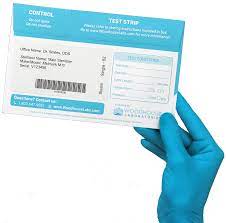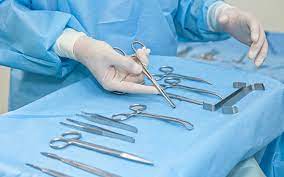If the mechanical (e.g., time, temperature, pressure) and chemical (internal or
external) indicators suggest that the sterilizer is functioning properly, a single
positive spore test result probably does not indicate sterilizer malfunction.
Items other than implantable items do not necessarily need to be recalled.
However, the sterilizer should be removed from service and sterilization
operating procedures reviewed to determine whether operator error could be
responsible. Sterilizer operators should repeat the spore test immediately using
the same cycle that produced the positive spore test.
If the result of the repeat spore test is negative and operating procedures were
correct, then the sterilizer can be returned to service. If the repeat spore test
result is positive, do not use the sterilizer until it has been inspected or repaired
and re-challenged with spore tests in three consecutive fully loaded chamber
sterilization cycles. When possible, items from suspect loads dating back to the
last negative spore test should be recalled, rewrapped, and re-sterilized.
Results of biological monitoring and sterilization monitoring reports should be
documented.
See Table 12 of the Guideline for Disinfection and Sterilization in Healthcare
Facilities, 2008 for the suggested protocol to manage a positive biological
indicator in a steam sterilizer.

If the mechanical (e.g., time, temperature, pressure) and chemical (internal or external) indicators suggest that the sterilizer is functioning properly, a single positive spore test result probably does not indicate sterilizer malfunction. Items other than implantable items do not necessarily need to be recalled. However, the sterilizer should be removed from service and sterilization operating procedures reviewed to determine whether operator error could be responsible. Sterilizer operators should repeat the spore test immediately using the same cycle that produced the positive spore test. If the result of the repeat spore test is negative and operating procedures were correct, then the sterilizer can be returned to service. If the repeat spore test result is positive, do not use the sterilizer until it has been inspected or repaired and re-challenged with spore tests in three consecutive fully loaded chamber sterilization cycles. When possible, items from suspect loads dating back to the last negative spore test should be recalled, rewrapped, and re-sterilized. Results of biological monitoring and sterilization monitoring reports should be documented. See Table 12 of the Guideline for Disinfection and Sterilization in Healthcare Facilities, 2008 for the suggested protocol to manage a positive biological indicator in a steam sterilizer.



No comment